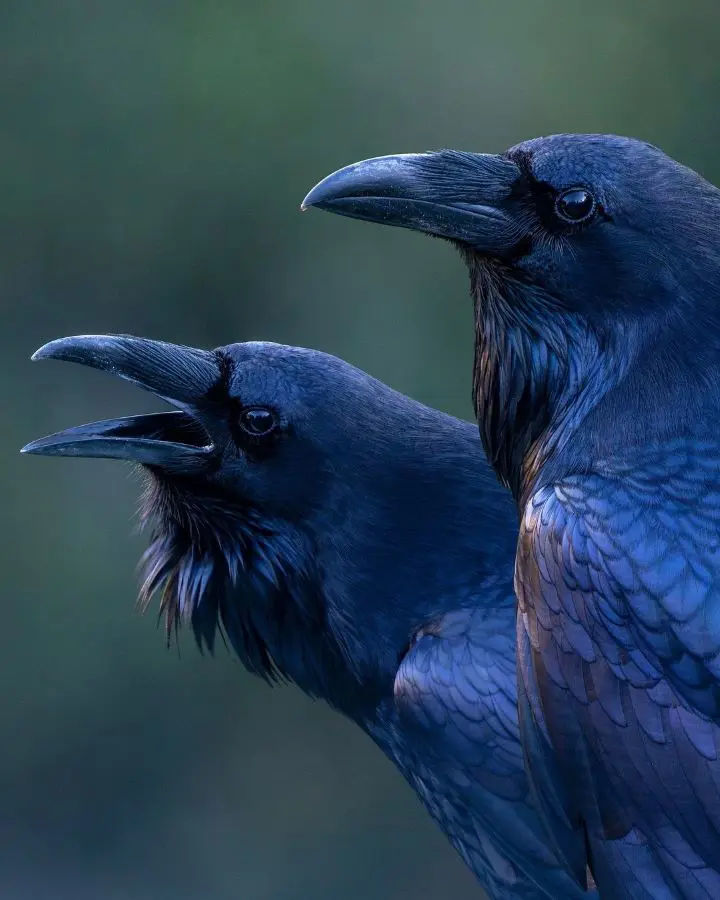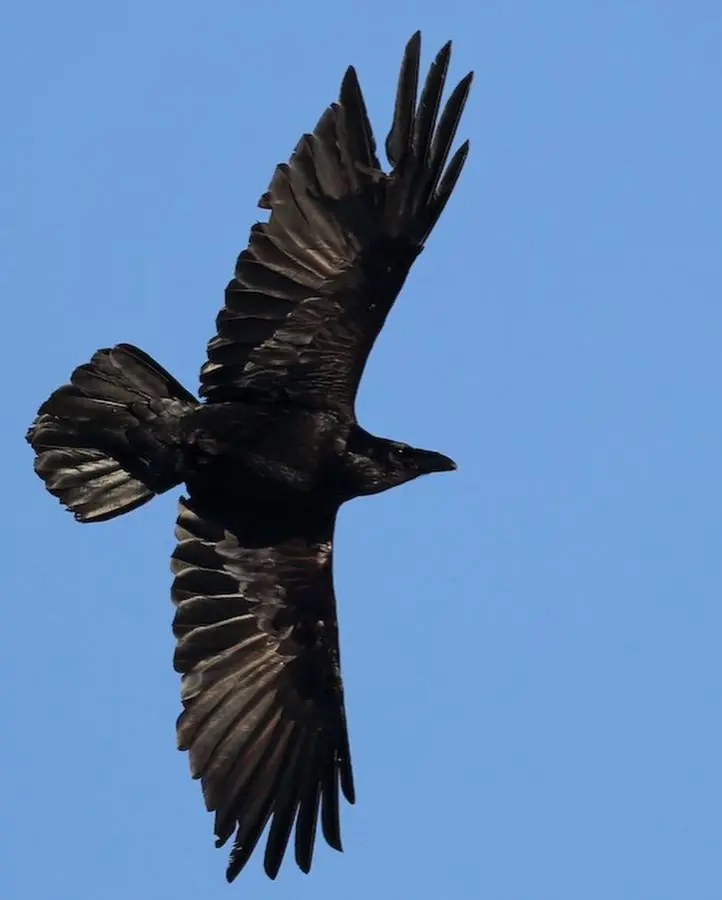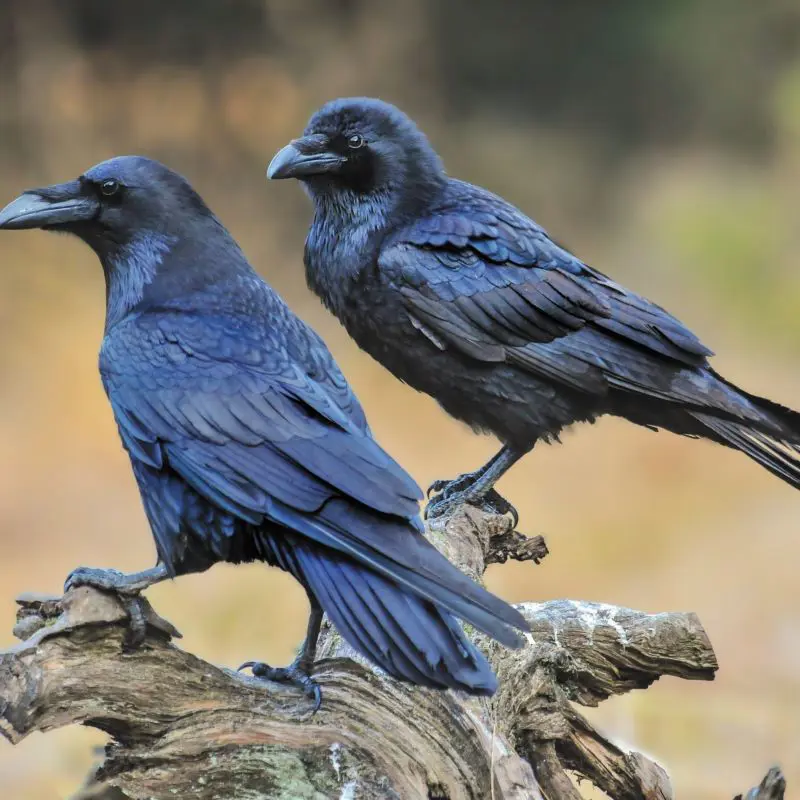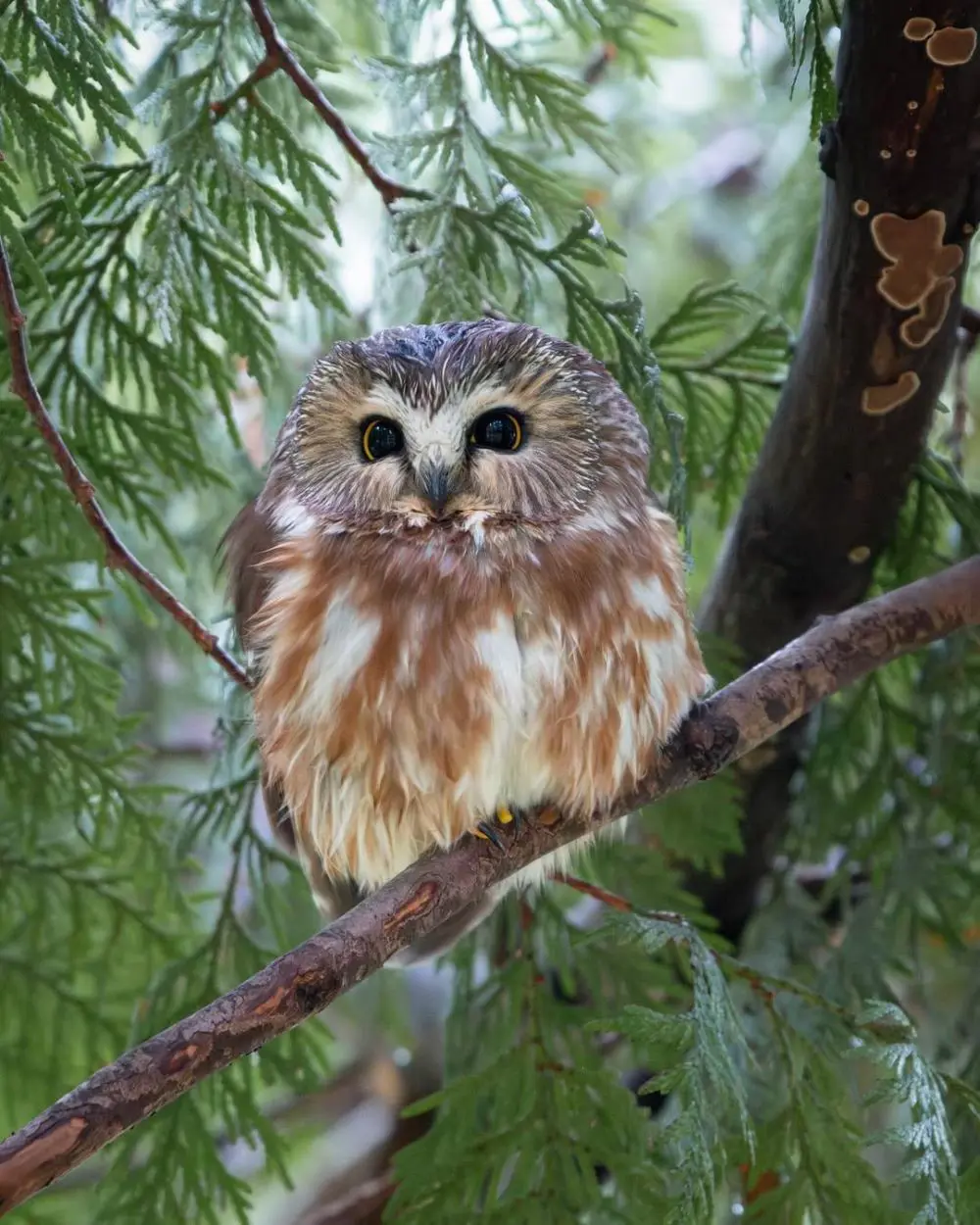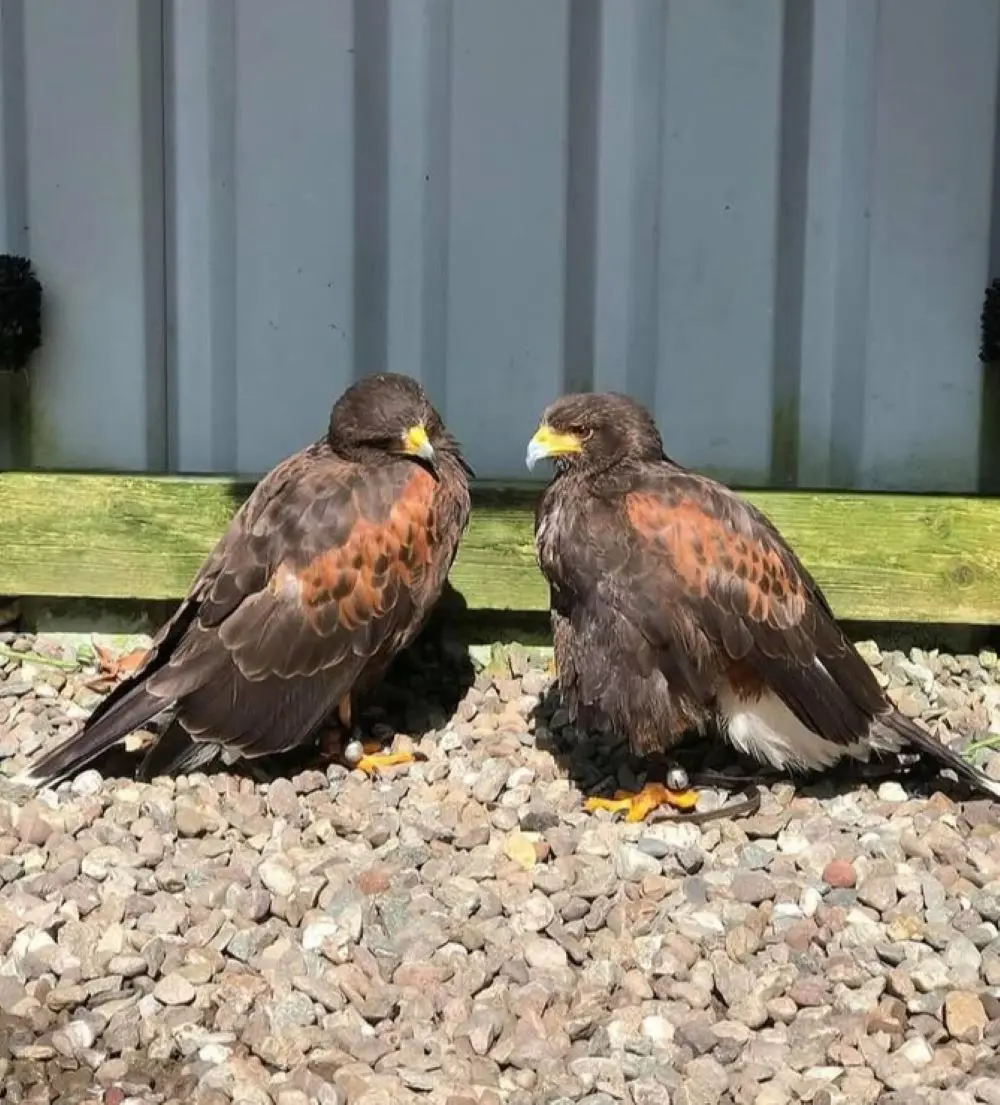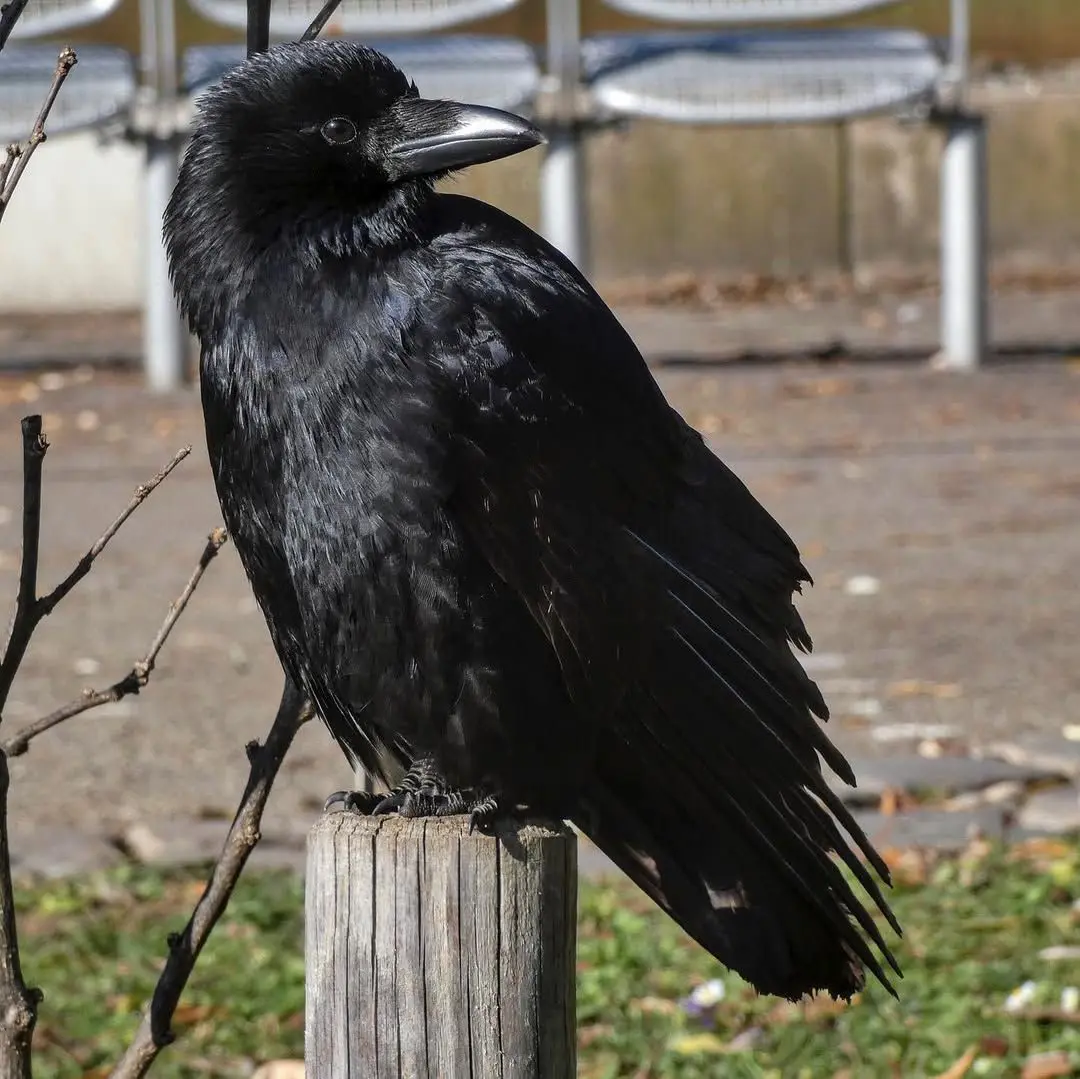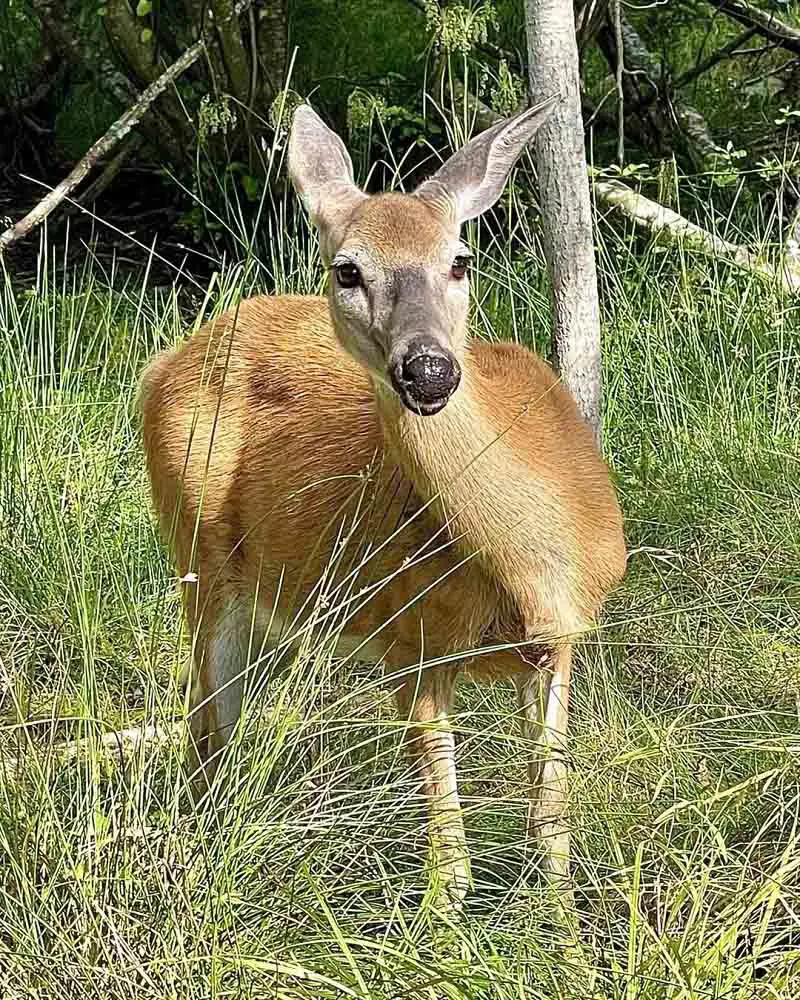Size And Appearance
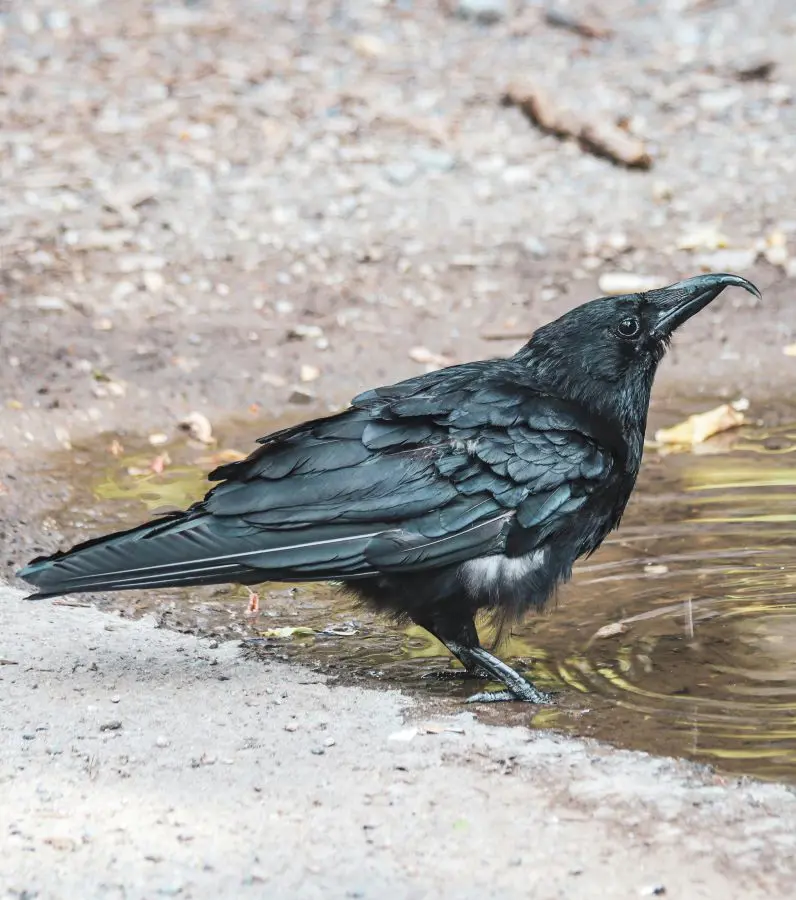
The Common Raven is a large, all-black passerine bird, the largest of the perching birds. Its wingspan is 45-51 inches (114-130 cm) and it can weigh between 24-57 ounces (680-1,620 grams). The raven's large, thick beak and wedge-shaped tail are distinctive features that set it apart from other corvids like crows.
A mature common raven ranges between 54 and 71 cm (21 and 28 inches) in length and has a wingspan of 116 to 153 cm (46 to 60 inches). The recorded weight ranges from 0.69 to 2.250 kg (1.52 to 4.96 lb), which makes the common raven one of the heaviest passerines.
The bill is large and slightly curved, with a culmen length of 5.7 to 8.5 cm (2.2 to 3.3 inches), easily one of the largest bills amongst passerines. It has a longish, strongly graduated tail, at 20 to 26.3 cm (7.9 to 10.4 in), mostly black iridescent plumage, and a dark brown iris.
The throat feathers are elongated and pointed, and the bases of the neck feathers are pale brownish-grey. The legs and feet are good-sized, with a tarsus length of 6 to 7.2 cm (2.4 to 2.8 in). Juvenile plumage is similar but duller with a blue-grey iris.
Overall, Ravens are massive birds with a thick neck and distinctive shaggy throat feathers. Like other corvids, ravens have strong, large feet and long bills. Most ravens are solid black and most closely resemble the common crow, but they soar in flight, more like hawks.
